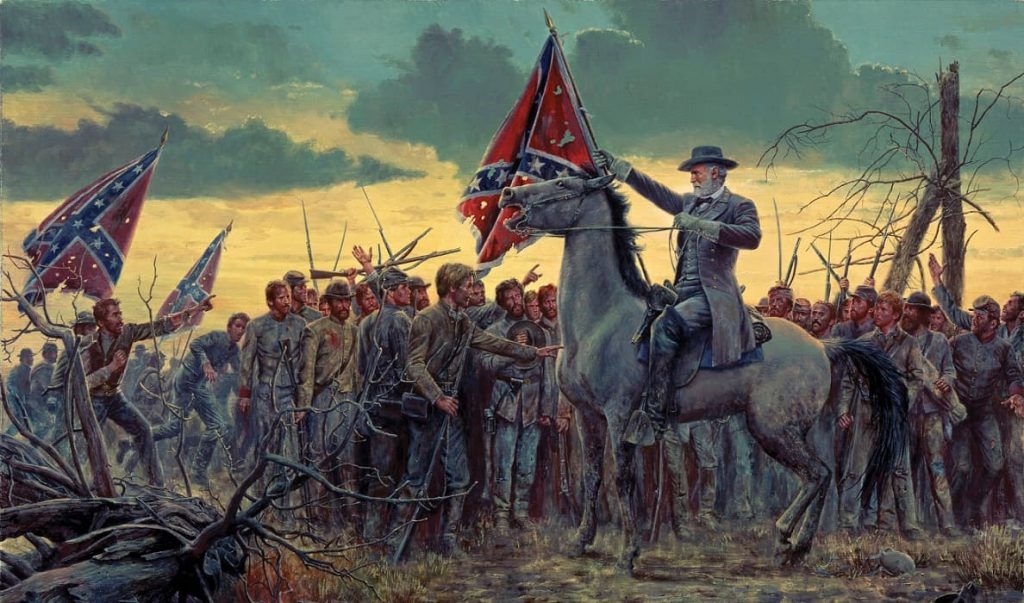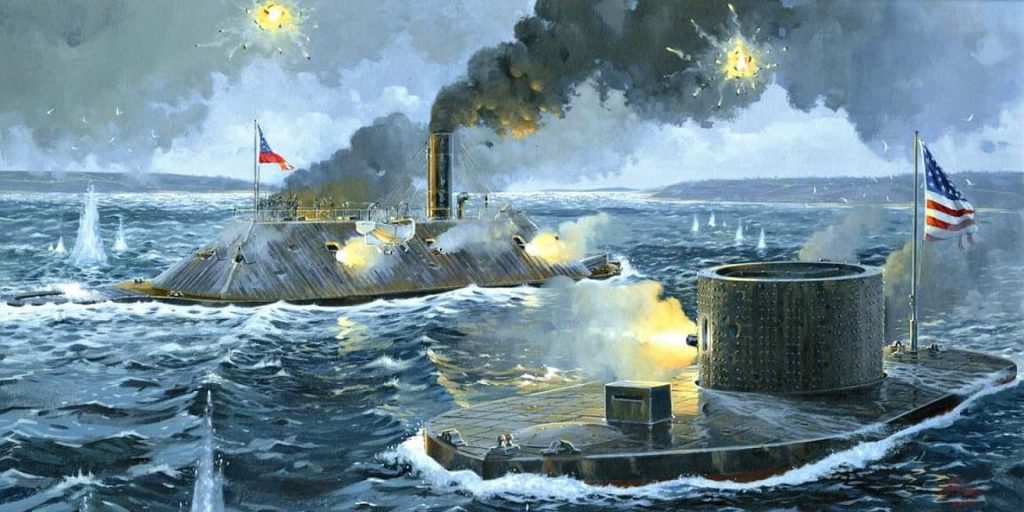First stage of the war (1861-1863)
The fighting began on April 12, 1861, with the Confederate capture of Fort Sumter in South Carolina. Its garrison remained loyal to the federal government and refused to capitulate, but after a 34-hour shelling was forced to surrender.
In response, Lincoln declared the Southern states in revolt and began calling for volunteers, and later introduced conscription. Similar actions were taken in the South.
The first major battle took place in Virginia. On July 18, the Federation army crossed the border at the Bull Run River, but was defeated by Confederate troops. The poorly trained Northerners took to flight. If the Southerners had pursued them and marched on Washington, the history of America could have turned out differently. However, the Confederation did not set the task of conquering the North, because the army of the South remained on the border. By the autumn, the commander-in-chief of the federal army, George McClellan, had raised a large army to invade Virginia, but he too was defeated.

Operations at sea were much more successful for the Northern states. Most of the navy remained under Federation control, so the Northerners managed to blockade several major southern ports, depriving the Confederacy of supplies from Europe.
In 1862, the army of the North achieved success in the west of the country: at the cost of many lives, they managed to drive the Southerners out of Kentucky, occupy the states of Tennessee and Missouri, and then invade the northern regions of Alabama and Mississippi.
On April 12, 1862, in Georgia, a group of Northern saboteurs stole a steam locomotive from the Confederates and went to Tennessee, setting fire to bridges behind them, damaging rails and cutting off telegraph wires. Opponents tried to catch up with them on another locomotive. This episode entered the history of the American Civil War as the “Great Engine Race”.
In the same spring, the world’s first battle of armored ships took place. The Confederate-built ironclad Virginia attempted to break the naval blockade by destroying several of the Federation’s wooden ships, but ran into a rival battleship, the Monitor. Their battle lasted more than three hours, but the ships were unable to destroy each other. Nevertheless, this episode made a revolution in naval affairs, proving to the whole world the superiority of a steel fleet over a wooden one.
In the early summer of 1862, on the eastern front, McClellan, nicknamed the “slower” for his indecisive actions, was removed from his post as commander in chief and sent with an army to storm Richmond, the capital of the Confederation. He had a 100,000-strong army at his disposal, but even such a force was not enough to take the fortifications erected on the approaches to the city by General Li. In the battle that went down in history as the Seven Days Battle (June 25 – July 1), both armies suffered enormous losses: about 2 thousand killed and 8 thousand wounded among the Northerners and almost 3.5 thousand killed and 16 thousand wounded among the Southerners.
The troops of General Lee managed not only to defend Rimchond, but also to launch a counteroffensive. On September 17, 1862, McClellan’s army of 75,000 blocked their path at Antietam Creek. The Battle of Antietam became the bloodiest day in all the years of the American Civil War – about 3.6 thousand people died on both sides of the front in one day. The battle ended in a virtual draw, but the Southerners retreated.
Lincoln demanded a decisive counterattack from McClellan, but the slow general was in no hurry to act and was dismissed. The new commander, Ambrose Burnside, launched an offensive against Richmond only in December 1862, but was also defeated by General Lee and removed from command.

The first stage of the war was unsuccessful for the Northerners. Despite being outnumbered, they failed to break the defenses of the South.
The authority of Lincoln, who still hoped to solve the problem without unnecessary bloodshed, began to decline – he was condemned for indecision and weakness of character. The defeats of 1861-1862 forced Washington to move to tougher measures.
Second phase of the war (1863-1865)
In early 1863, Lincoln issued the Emancipation Proclamation, which declared all slaves in the Southern states free. Negroes were able to fight for their independence in the ranks of the Federation army. This decision completely changed the nature of the war – now it was fought not only for the preservation of the unity of the United States, but also for the abolition of slavery. Great Britain and France, former trading partners of the Southern states, now looked favorably on Lincoln’s actions, and Russia even sent a naval squadron to support the president (however, the Russians did not take part in this war).
